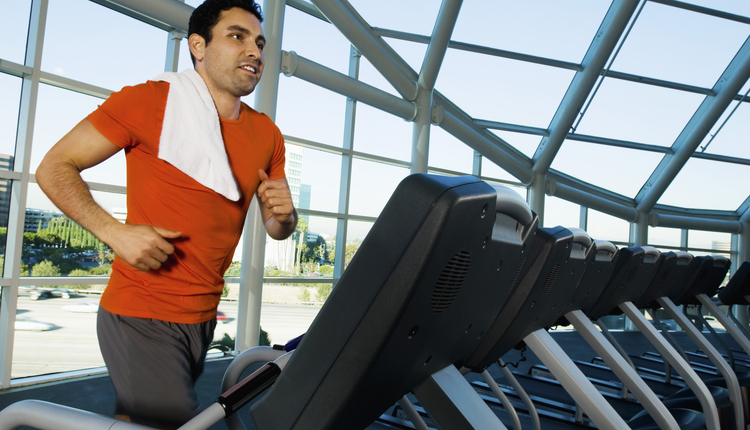
The fitness landscape is changing. Big-box gyms and high-end personal training studios are quickly being overtaken in cities across America by low-cost (even NO-cost) facilities. That’s not to say the big chains are going away, but now more than ever independent fitness professionals can start their own businesses on very limited budgets.
The truth is, it’s not the equipment or even the space that builds a great business. It’s your connection with your clients, and, of course, the results you deliver.
When I left the big name facility in my city I literally started my personal training business in a local park (with no rent) with a suitcase filled with a portable fitness band system (approximately $800) and a portable Bose SoundDock ($300) for my iPhone. That was it. $1100 in equipment start-up costs, and I made all that money back in the first month!
Living in Minnesota, I had to find indoor space quickly; the warm weather was coming to an end. Having a business that was only a couple months old, I didn’t have the money or the credit to lease my own space so I rented a room at the local recreation center. I trained out of that space for about a year and a half and managed to build up a $10,000-month business – using only body weight and that set of resistance bands as my training equipment.
I also made it policy that each member had to purchase their own set of bands – kind of like an “initiation fee” that you see at health clubs except they actually got something of value. I still do this today and it works great. Clients actually like having their own bands to workout with. They also use that for home and travel workouts that I give them. From my end, my bands (for trial members) last longer due to less wear and tear, and I make an affiliate commission on each set sold. Everybody wins!
Ultimately I decided I wanted to get my own space because I was limited with what I could do at the recreation center. Plus, I wanted a more “legit” business that I could call my own. That led me to renting my current facility.
When I opened my studio, I chose to start adding other equipment. I probably didn’t need to as my clients were very happy and I became known as the guy who trained with body weight and bands – it actually helped niche my business. However, I wanted more equipment so that’s the route I went.
To keep my budget under control budget, I did some unique things:
1. I raised my rates. This was easily justified with moving from the recreation center to my own facility as everyone knew my rent was going up significantly.
2. I offered a limited number of paid-in-full (PIF) grand opening specials to raise money for my initial equipment purchase.
3. When I decided to add kettlebells to my training I offered a kettlebell training workshop to cover the cost of purchasing the bells before I ever purchased the bells; the program sold out! I’ve since done multiple workshops for both pure profit and to fund the purchase of additional bells. I did the same thing when I decided to add battling ropes.
I’ve continued to add equipment little by little over time. I strongly recommend adding equipment in waves. This way it seems like you’re always making your facility better (which you are) instead of having everything at once and then it’s the old “what have you done for me lately” syndrome. It’s more fun for you and clients when you add new “toys” every six months or so.
Additionally, what my studio gave me (besides “legitimacy,” awareness, a destination, etc.) was a place to really focus on maximizing client value – one of my favorite things to do.
I love creating backend offers (BEOs) to sell to my clients. These can be workshops, seminars, coaching programs, transformation programs, specialty workouts, etc. BEOs give you the ability to make more money per client and generate income during times that you normally don’t train clients.
All in all, it really doesn’t take much money to outfit a successful personal training studio. It always comes back to your relationship with your clients and delivering an outstanding service that they value and adding creative programs to generate additional revenue.
The truth is, it’s not the equipment or even the space that builds a great business. It’s your connection with your clients, and, of course, the results you deliver.
When I left the big name facility in my city I literally started my personal training business in a local park (with no rent) with a suitcase filled with a portable fitness band system (approximately $800) and a portable Bose SoundDock ($300) for my iPhone. That was it. $1100 in equipment start-up costs, and I made all that money back in the first month!
Living in Minnesota, I had to find indoor space quickly; the warm weather was coming to an end. Having a business that was only a couple months old, I didn’t have the money or the credit to lease my own space so I rented a room at the local recreation center. I trained out of that space for about a year and a half and managed to build up a $10,000-month business – using only body weight and that set of resistance bands as my training equipment.
I also made it policy that each member had to purchase their own set of bands – kind of like an “initiation fee” that you see at health clubs except they actually got something of value. I still do this today and it works great. Clients actually like having their own bands to workout with. They also use that for home and travel workouts that I give them. From my end, my bands (for trial members) last longer due to less wear and tear, and I make an affiliate commission on each set sold. Everybody wins!
Ultimately I decided I wanted to get my own space because I was limited with what I could do at the recreation center. Plus, I wanted a more “legit” business that I could call my own. That led me to renting my current facility.
When I opened my studio, I chose to start adding other equipment. I probably didn’t need to as my clients were very happy and I became known as the guy who trained with body weight and bands – it actually helped niche my business. However, I wanted more equipment so that’s the route I went.
To keep my budget under control budget, I did some unique things:
1. I raised my rates. This was easily justified with moving from the recreation center to my own facility as everyone knew my rent was going up significantly.
2. I offered a limited number of paid-in-full (PIF) grand opening specials to raise money for my initial equipment purchase.
3. When I decided to add kettlebells to my training I offered a kettlebell training workshop to cover the cost of purchasing the bells before I ever purchased the bells; the program sold out! I’ve since done multiple workshops for both pure profit and to fund the purchase of additional bells. I did the same thing when I decided to add battling ropes.
I’ve continued to add equipment little by little over time. I strongly recommend adding equipment in waves. This way it seems like you’re always making your facility better (which you are) instead of having everything at once and then it’s the old “what have you done for me lately” syndrome. It’s more fun for you and clients when you add new “toys” every six months or so.
Additionally, what my studio gave me (besides “legitimacy,” awareness, a destination, etc.) was a place to really focus on maximizing client value – one of my favorite things to do.
I love creating backend offers (BEOs) to sell to my clients. These can be workshops, seminars, coaching programs, transformation programs, specialty workouts, etc. BEOs give you the ability to make more money per client and generate income during times that you normally don’t train clients.
All in all, it really doesn’t take much money to outfit a successful personal training studio. It always comes back to your relationship with your clients and delivering an outstanding service that they value and adding creative programs to generate additional revenue.








